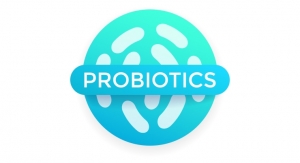01.09.19
While consumers cite broad aspects like taste, price, and familiarity as the top reasons to purchase certain foods, they also crave a deeper understanding of what they are eating. Americans want to learn more about the origins of their food and its entire journey from farm to fork, according to the International Food Information Council (IFIC) Foundation.
“Americans have a growing appetite for more information about their food, and technology is enabling eaters like never before,” said Joseph Clayton, CEO of the IFIC Foundation. “It’s also driving transparency across the food supply chain.”
IFIC Foundation predicted that 2019 will bring a larger focus on the food journey, greater attention to food safety and allergens, continued consumer concern about sugar and increased popularity of plant-based eating.
Discovering Our Foods’ Origin Stories
Consumer interest and awareness of the origins of their food used to start and stop at the grocery store or restaurant. Today, consumers want to know how their food is produced, where it came from, and the quality of the ingredients. They also have broader questions about environmental sustainability and many seek brands that align with their broader social values.
The 2018 Food and Health Survey revealed over half of respondents indicated recognizing the ingredients, understanding where food is from, and the number of ingredients as key factors that impact purchasing decisions. Interestingly, women were more likely to rate these factors as more important when compared to men. In addition, compared to 2017, more Americans cited that understanding how the food is produced altered their decision to buy a food or beverage.
From seeds planted to crops harvested to products sold and served, people seem to crave a 360-degree picture of what they’re eating.
Tackling Food Safety with Technology
Tracing the source of food contamination within the supply chain is central to food safety. Food safety concerns dominated the news last year, with two dozen food safety outbreaks investigated by the Centers for Disease Control and Prevention—the highest number of outbreaks in more than a decade.
However, this does not mean that the U.S. food supply is less safe. Instead, the ability to detect contamination of food (i.e., traceability) has improved dramatically.
One technology that has improved rates of traceability is the whole-genome sequencing (WGS) technique. WGS generates the complete DNA sequence of an organism, which allows for distinction between and among different pathogens. Its resolution is far superior than technologies used in the past; some food safety experts believe WGS-based surveillance is about 100 times better at detecting outbreaks than two decades ago.
Food Allergies: Actions & Reactions
WGS also stands to make positive contributions in the area of food allergens, such as peanuts. Using WGS data from patients with a peanut allergy might help identify peanut allergies in young babies before they can pose life-threatening anaphylactic reactions. Additionally, WGS can be used to detect trace amounts of allergens in foods.
Food allergies are also attracting more attention on the regulatory front because the FDA is looking into labeling sesame as an allergen.
Expect those discussions to move closer to center stage in 2019.
There’s No Sugar-Coating This Trend
If you had to name one thing that you should eat less of, most people would probably say sugar. According to the 2018 Food and Health Survey, more than fat, protein, or carbohydrate, sugar is to blame for packing on a few extra pounds, with 33% believing that it is the calorie source most likely to cause weight gain (up from 20% in 2012).
The sweet stuff remains top-of-mind for many Americans, and people are responding to dietary guidance that recommends eating less added sugar. Seventy-seven percent said they are taking steps to limit or avoid sugars in their diet, and 59% view sugars negatively. In addition, the mandatory compliance date for labeling added sugars on the Nutrition Facts panel is now less than a year away (Jan. 1, 2020). Coupling the current negative consumer sentiment on sugars with more information about them included on food packaging led IFIC to believe the sugar reduction trend will continue in 2019.
As a result, IFIC also expects to see growing popularity of low- and no-calorie sweeteners, particularly stevia leaf extract and monk fruit sweeteners due to their appeal as plant-based alternatives to sugar.
Voracious Vegetarians & Vegans
Plant-based eating is flourishing in American diets, with sales growing by 20% since 2017, a trend that shows few signs of abating. While only 4% of Americans identify as vegetarians or vegans, according to the 2018 Food and Health Survey, many others cited following diets that are typically high in veggies, such as paleo (7%), low-carb (5%), Whole30 (5%), and high protein (4%). Vegetables also are the second most popular food or food component people are seeking to provide health benefits (7%), behind protein (10%).
This interest in plant-based eating can also be applied to specific macronutrients. For example, according to the 2018 Food and Health Survey, nearly 70% of Americans stated that protein from plant sources is healthy, while less than four in 10 reported that animal protein is healthy. This trend doesn’t seem to be going anywhere anytime soon as sales of plant-based milk alternatives and meat alternatives continue to expand each year.
“Americans have a growing appetite for more information about their food, and technology is enabling eaters like never before,” said Joseph Clayton, CEO of the IFIC Foundation. “It’s also driving transparency across the food supply chain.”
IFIC Foundation predicted that 2019 will bring a larger focus on the food journey, greater attention to food safety and allergens, continued consumer concern about sugar and increased popularity of plant-based eating.
Discovering Our Foods’ Origin Stories
Consumer interest and awareness of the origins of their food used to start and stop at the grocery store or restaurant. Today, consumers want to know how their food is produced, where it came from, and the quality of the ingredients. They also have broader questions about environmental sustainability and many seek brands that align with their broader social values.
The 2018 Food and Health Survey revealed over half of respondents indicated recognizing the ingredients, understanding where food is from, and the number of ingredients as key factors that impact purchasing decisions. Interestingly, women were more likely to rate these factors as more important when compared to men. In addition, compared to 2017, more Americans cited that understanding how the food is produced altered their decision to buy a food or beverage.
From seeds planted to crops harvested to products sold and served, people seem to crave a 360-degree picture of what they’re eating.
Tackling Food Safety with Technology
Tracing the source of food contamination within the supply chain is central to food safety. Food safety concerns dominated the news last year, with two dozen food safety outbreaks investigated by the Centers for Disease Control and Prevention—the highest number of outbreaks in more than a decade.
However, this does not mean that the U.S. food supply is less safe. Instead, the ability to detect contamination of food (i.e., traceability) has improved dramatically.
One technology that has improved rates of traceability is the whole-genome sequencing (WGS) technique. WGS generates the complete DNA sequence of an organism, which allows for distinction between and among different pathogens. Its resolution is far superior than technologies used in the past; some food safety experts believe WGS-based surveillance is about 100 times better at detecting outbreaks than two decades ago.
Food Allergies: Actions & Reactions
WGS also stands to make positive contributions in the area of food allergens, such as peanuts. Using WGS data from patients with a peanut allergy might help identify peanut allergies in young babies before they can pose life-threatening anaphylactic reactions. Additionally, WGS can be used to detect trace amounts of allergens in foods.
Food allergies are also attracting more attention on the regulatory front because the FDA is looking into labeling sesame as an allergen.
Expect those discussions to move closer to center stage in 2019.
There’s No Sugar-Coating This Trend
If you had to name one thing that you should eat less of, most people would probably say sugar. According to the 2018 Food and Health Survey, more than fat, protein, or carbohydrate, sugar is to blame for packing on a few extra pounds, with 33% believing that it is the calorie source most likely to cause weight gain (up from 20% in 2012).
The sweet stuff remains top-of-mind for many Americans, and people are responding to dietary guidance that recommends eating less added sugar. Seventy-seven percent said they are taking steps to limit or avoid sugars in their diet, and 59% view sugars negatively. In addition, the mandatory compliance date for labeling added sugars on the Nutrition Facts panel is now less than a year away (Jan. 1, 2020). Coupling the current negative consumer sentiment on sugars with more information about them included on food packaging led IFIC to believe the sugar reduction trend will continue in 2019.
As a result, IFIC also expects to see growing popularity of low- and no-calorie sweeteners, particularly stevia leaf extract and monk fruit sweeteners due to their appeal as plant-based alternatives to sugar.
Voracious Vegetarians & Vegans
Plant-based eating is flourishing in American diets, with sales growing by 20% since 2017, a trend that shows few signs of abating. While only 4% of Americans identify as vegetarians or vegans, according to the 2018 Food and Health Survey, many others cited following diets that are typically high in veggies, such as paleo (7%), low-carb (5%), Whole30 (5%), and high protein (4%). Vegetables also are the second most popular food or food component people are seeking to provide health benefits (7%), behind protein (10%).
This interest in plant-based eating can also be applied to specific macronutrients. For example, according to the 2018 Food and Health Survey, nearly 70% of Americans stated that protein from plant sources is healthy, while less than four in 10 reported that animal protein is healthy. This trend doesn’t seem to be going anywhere anytime soon as sales of plant-based milk alternatives and meat alternatives continue to expand each year.


























